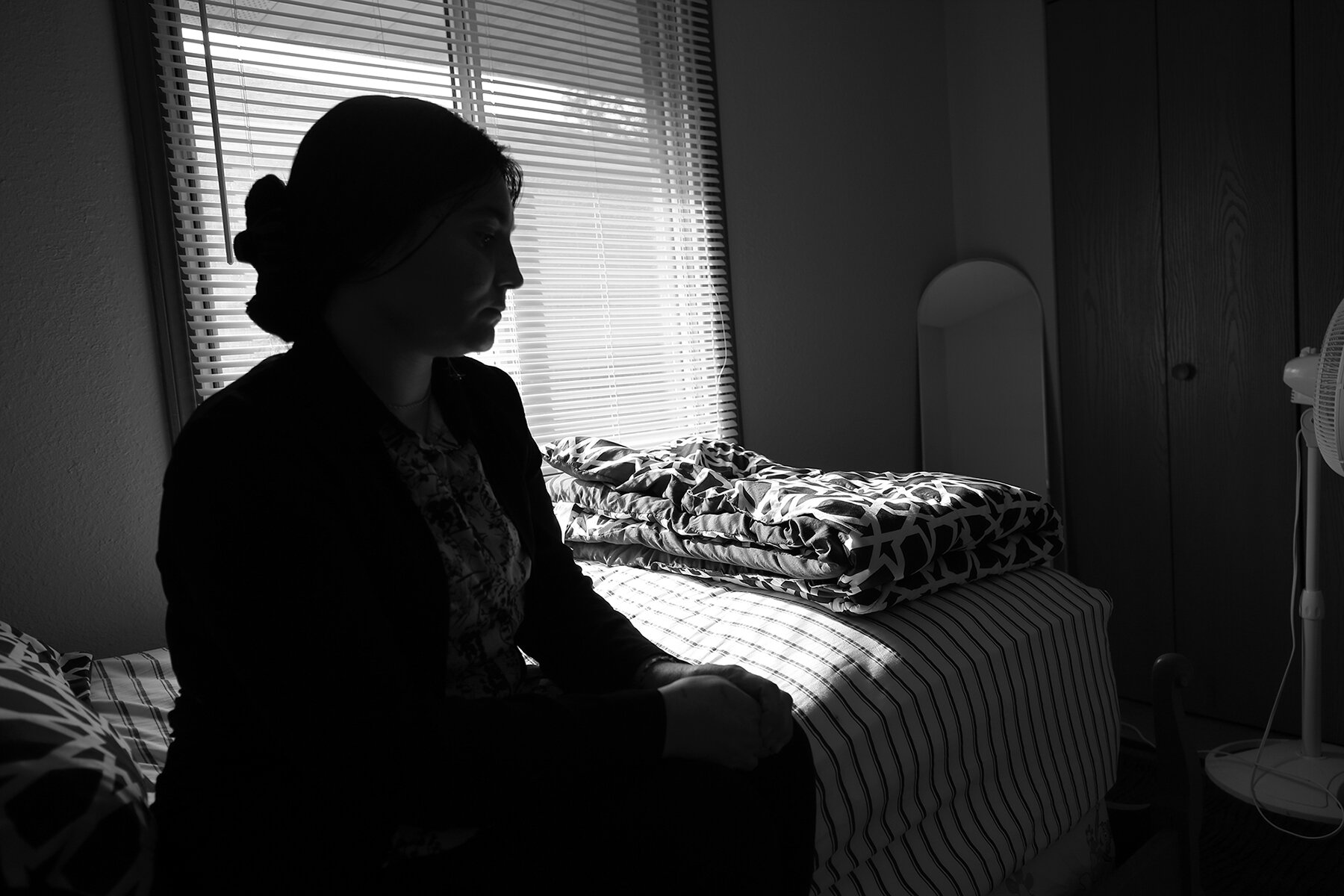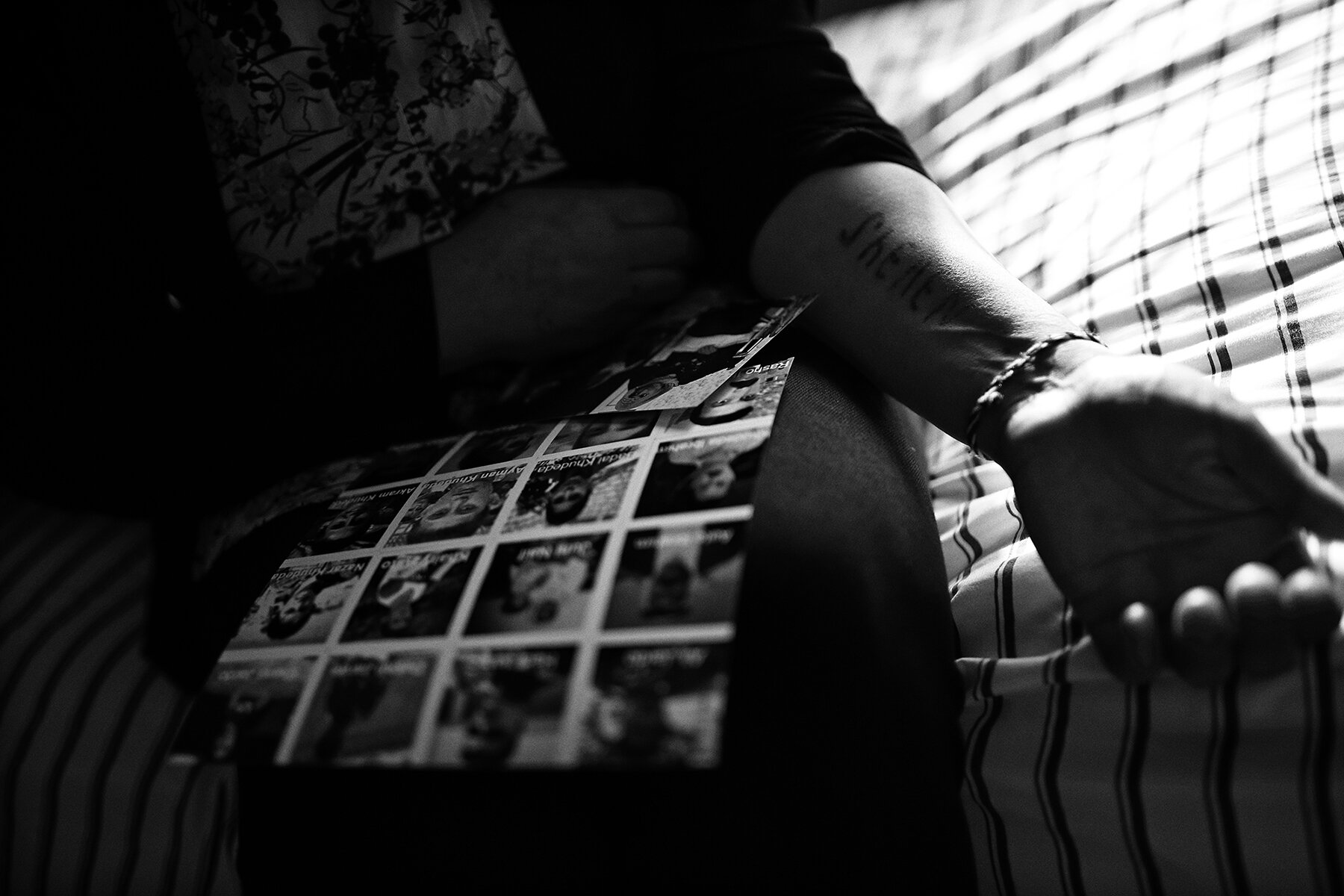From Captivity to Freedom
Text and Photos by Asher Imtiaz. Poetry by Mari Reitsma Chevako.
Published in The Living Church in November 2017 issue.
A Yazidi family set up a spot at Oak Lake Park in Lincoln to watch fireworks. Lincoln, Nebraska 2017
As a documentary photographer and a Pakistani living in the United States, I was searching for an experience in the heart of the country that was authentically American and different from my experiences in previous travels. I chose a trip to Nebraska for the Independence Day weekend. What I found was something I hadn’t expected.
The city of Lincoln is home to 2,000 Yazidis from northern Iraq, many of whom have fled the Islamic State. ISIS invaded Yazidi villages in northern Iraq in August 2014. The people scattered, some to nearby cities, and some to Mt. Sinjar, which some people consider the resting place of Noah’s ark. Because the Yazidis’ faith combines threads of Christianity, Hinduism, and Islam, many Muslims consider them idolaters and polytheists. ISIS has claimed the right to enslave them in an effort to force their conversion.
Esmaeel and his son Juan. Lincoln, Nebraska 2017.
One of the first photographs I've taken of a Yazidi living in the US. Yazidis are an ethno-religious minority with total population around 900,000 in the world. Most of them are based in Northern Iraq. Around 3000 Yazidis live in the United States.
By many accounts, ISIS rounded up the Yazidis and moved them to other locations in Iraq, where families were separated and dealt with according to their sex and age. Adult men were shot and killed, adult women were enlisted as servants, young men were taken as fighters, and young women were forced into a system of sexual slavery in which they were bought, sold, and raped over time by multiple men. The fighters eventually turned to married women as well. Thousands of Yazidis remain missing and thousands of Yazidi women are still in captivity. The United Nations has urged its member nations to recognize the genocide against the Yazidi people and to bring ISIS militants to justice.
I have followed news of the Yazidi people since 2014, but I had not met any Yazidis. Once I learned they were living in Lincoln, I began searching for them. The first man I met works at Target. I asked if I could meet with him at the end of his shift. He told me he had to attend a wedding, so I asked him if I could join him. He graciously said yes.
At the wedding, among more than 500 Yazidi guests, I met several others willing to meet me the next day: a journalist, an artist, and a social worker dedicated to helping Yazidis who escaped ISIS. The social worker, Laila Khoudeida, works closely with Yazda, which has U.S. offices in Lincoln and Houston. I told her I was interested in telling the story of a Yazidi woman she was helping, and we agreed that I would visit her again later in the month.
Yazidi girls watch fireworks on a hill with the Lincoln skyline in background. Lincoln, Nebraska 2017.
On July 3, I attended a fireworks celebration in Lincoln where I met more Yazidi families. They were eating ice cream and wearing stars and stripes. The next day, I visited a small town outside of Lincoln where I saw a parade and a lot of families that were mostly white. They were eating ice cream and wearing stars and stripes.
When I returned to Nebraska, circumstances prevented me from meeting with Laila as we had planned. Instead, on August 21 in Lincoln, I watched the solar eclipse through a pair of protective glasses. In the ancient world during a total eclipse, when the sun fled, some people thought God had abandoned them. I wondered if, in August 2014, the Yazidis imagined God had abandoned them when ISIS invaded their villages. And what about these refugees living among us? Do we see them at all? Do they move among us like shadows? Do we see them only from behind protective glasses?
The solitary woman in these photographs is Shireen Jardo. She is 31 years old. With Laila’s help, I took photographs of her when I traveled to Lincoln for a third time on Labor Day weekend. Shireen agreed to let me photograph her because I told her that I would make her story known, in the hope that it would help her find her family and help her people find justice.
Laila gave me a copy of Shireen’s story, which covered 13 single-spaced typed pages. There are no paragraph breaks. The names of places are specific. The names of her tormentors are specific. Everything that was done to Shireen has been written down, and through interpreters, she’s told her story to members of Congress and to the United Nations. It’s this kind of testimony that can help convict the men and women who hurt her and her family. Before her captivity, she dreamed of being a lawyer. Perhaps that dream drives her now. Her most immediate goal is to speak English well enough to tell her story without an interpreter.
Shireen and 46 members of her family were taken captive when ISIS invaded her village in 2014. They were taken to a building near Mt. Sinjar where public records were kept. Shireen remembers that the women were kept in the yard and that the fighters looked down on them from the second-story windows of the building. On the first night, the fighters came down to the yard to take women for themselves. Her 15-year-old sister, Sahera, was crying and throwing up as she was taken away. She was wearing a dress Shireen had made for her.
Shireen at her apartment. Lincoln, Nebraska. 2017
Shireen and members of her family were forced to move again and again from place to place in Iraq. She always looked for Sahera and tried to gather her sisters and sisters-in-law, her nieces and nephews, around her. She saw other women in her family taken away. She and her relatives tried to outsmart the militants to protect themselves. Shireen and her cousin, Khairi, pretended to be married because the militants were not raping married women. In the midst of the fear and despair, she asked Khairi to tattoo her name on her arm in English letters so that if she killed herself her identity would be clear to whoever found her body. Shireen and the other women were separated from the men in their families and taken to Mosul by bus. In Mosul, the women were kept in the courthouse, where they were prepared to be given to fighters. To prevent herself from being assaulted, Shireen pretended to be mute and disabled. She also refused to eat. In the end she was sold five times. Along the way she was tortured by women and men to prove she was faking.
Shireen was eventually released by ISIS along with a group of elderly women and men. She was then settled in a refugee camp before moving to the United States. When Mosul was liberated earlier this year, she hoped she would see her family again. While she has been reunited with some of her family, she is still waiting for news of the rest, including three of her brothers and their families who remain missing. You can see them in the photographs she holds in her hands.
I traveled to Nebraska searching for an authentically American experience in the heart of the country, and God led me to the Yazidi people celebrating freedom and straining toward hope. I believe God calls us to see people like Shireen and her missing brothers. The nations with all their suffering and determination are among us. As disciples of Christ, we have an opportunity to see them vividly and directly, not as sad apparitions hiding in the corner of our sight but as fully whole and fully human. When we see our neighbors — when we know their stories and sorrows in their own words — we step closer to our call to love.
Hussin, a Yazidi artist, moved to the United States on the same day when genocide started in Sinjar region (Northern Iraq) in August 2014. He left 100s of art work behind and most of it is destroyed now. He shared with me many of his lucid dreams.. one where many wolves were following him and his brother on Mt. Sinjar and they went to the edge of the mountain and were thinking about jumping.
In 2014, thousands of Yazidis went on top of mountain when ISIS attacked Sinjar region. In few days, approximately 12,000 Yazidis were killed or abducted by IS. I don't know if some people actually jumped off Mt. Sinjar.
Lincoln, Nebraska 2017.
Shireen in her apartment. Lincoln, Nebraska 2017.
Sorrows
We walk side by side with our sorrows.
Vigilantly, in our peripheral vision,
we keep track of them there
lest we lose sight of their significance,
lest they overtake us.
They’re hewn from our hearts, you see,
what we’ve loved and lost,
what we hoped to be.
Sometimes our sorrows
join hands with others’ sorrows
like those crisp strings of dolls
cut from accordion-folded paper.
When sympathy has fled,
they sink underground,
where deep calls mournfully to deep.
And then hope rises up,
and we imagine yet
we can usher our sorrows into an ark
and set them adrift to where,
beyond all knowing,
they’ll find their consolation.
If we ourselves forget
it’s only the way we forget
the sun during a total eclipse,
staring into its absence with protective glasses,
until there they are again,
all the familiar shadows.
We must tend to our sorrows
as if they were fires,
as if they were saints.
We must tie them on our foreheads,
pin them to our breasts,
sing of them when we’re driving along,
radios tuned to the oldest, saddest songs.
Our worst fear is
that they become insignificant,
yesterday’s news, an embedded link
in the story of someone else’s happy, happy life,
or that others expect us
to move about like ghosts, as if our sorrows
have rendered our very flesh
too much for decent folk.
Put your fingers here, we say,
reach out your hand, or
Here is my name written in an alphabet
you can understand,
though you can call us Sharon or Sally or Alice for short,
something you can get your tongue around.
If only you will call us something, you
who have managed to clothe yourselves
with righteousness and ease,
we’re here tugging at your hem.Mari Reitsma Chevako
September 2017









